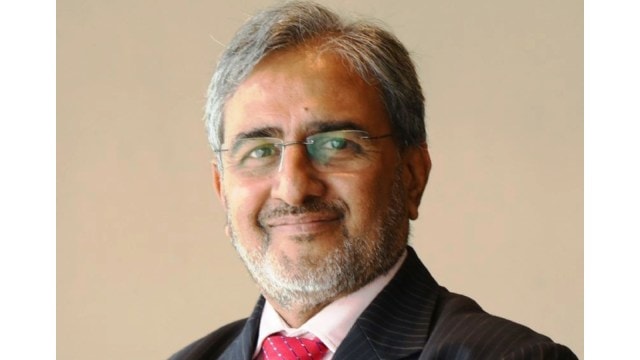Click here to join Express Pune WhatsApp channel and get a curated list of our stories
Focus on new tools that can help prevent HIV infection: Dr Gilada
Dr I S Gilada cautioned against the rise in HIV infections and made a strong pitch for re-engaging prevention campaigns with added zeal involving social media and incorporating prevention and treatment of other Sexually Transmitted Infections
 Dr I S Gilada, President Emeritus, AIDS Society of India. Express photo
Dr I S Gilada, President Emeritus, AIDS Society of India. Express photo‘Put People First’, before their condition, lends a humane touch and importance to the person living with HIV, says Dr I S Gilada, President Emeritus, AIDS Society of India, ahead of the 25th International AIDS Conference in Munich from July 22-26. Pre-conferences will be held on July 20 and 21 and the AIDS 2024 ‘Global Village’ will feature over 200 activities, including speaker sessions, cultural activities, film screenings and workshops.
AIDS 2024 will convene thousands of people living with, affected by and working on HIV to share knowledge, best practices and lessons learnt from the HIV response over the past 40 years, as well as from the responses to Covid-19, mpox and other public health threats. An estimated 15,000 participants around the world will attend AIDS 2024 and in the lead up to the conference, a groundswell of support is being mobilised to help champion the principle ‘Put People First’.
Dr Gilada, who is also a governing council member of the International AIDS Society, told The Indian Express that delegates cutting across science, caregivers, community and policymakers are in full attendance. “Highly Active Antiretroviral Therapy — which was invented in 1995, was just a dream for people living with HIV from low and middle income countries but India has made it ‘a dream come true’ by making it affordable and available. Today, 92 per cent of persons living with HIV (PLHIV) are taking ART made by India,” he said.
The expert, however, cautioned against the rise in new HIV infections and made a strong pitch for re-engaging prevention campaigns with added zeal involving social media and incorporating prevention and treatment of other Sexually Transmitted Infections (STIs). He said that there were over 200 sessions that spotlight the latest science, insights and lessons for and from the global HIV response. “The focus will be on new tools that can help prevent HIV infection,” he added.
He spoke about the relevance of the official theme of the conference ‘Put People First’ and urged policymakers, researchers, conferences, journals and caregivers to follow thoughtful and responsible language code. “Almost four decades back, when we started working among the girls and women in sex work, we realised that the connotations like whore, prostitute, fallen women, flesh trade, sex worker contributed immense stigma. That’s when a new word was given about a woman in sex work,” he said.
“We should not define people by diseases or conditions. If the language is wrong, we can contribute to stigmatisation. For instance HIV-infected is changed to a person living with HIV, and poorly adherent is changed to people with poor adherence. So much so that the word AIDS needs to be deleted as it contributes more stigma than any other word,” he added.
Emphasis on reducing new infections
With around 24.67 lakh people living with HIV (PLHIV), India has the second largest HIV epidemic in the world, accounting for around 6.3% of all PLHIV worldwide, according to the fifth edition of Sankalak — the flagship report of National AIDS Control Programme (2023). “Over the last two decades the death rates in HIV have come down heavily, thanks to newer, better and cheaper Anti Retroviral Therapy (ART). But deaths are still happening. Today each additional death is like a missed opportunity. That’s because we are still way behind in our first target, where 95% of those with HIV should know their status. However we are at 78%. This can have cascading effects on next targets,” Dr Gilada pointed out. “Major HIV awareness and prevention campaigns that were seen during 2000-2010 are missing, that includes a focus on preventing Injectable Drug Use (IDU) as also HIV infection among IDUs. Those children born during that period, now grown-up to teen and adulthood have escaped prevention campaigns, thus becoming victims of HIV and other Sexually Transmitted Infections and that is a concern,” he said.
On lessons learned, HIV cure and promising research
The Berlin patient Timothy Ray Brown’s case gave the world hope for an HIV cure. It opened the door for scientists to explore the concept that a cure for HIV is possible. “The cure research is making progress. Broadly neutralising antibodies bNAbs research is also showing promising results,” sais Dr Gilada. He added that in virally suppressed PLHIVs, long acting injectables are useful and research is ongoing if the gap between two doses can be widened to six months from its current two months gap.
Click here to join Express Pune WhatsApp channel and get a curated list of our stories








